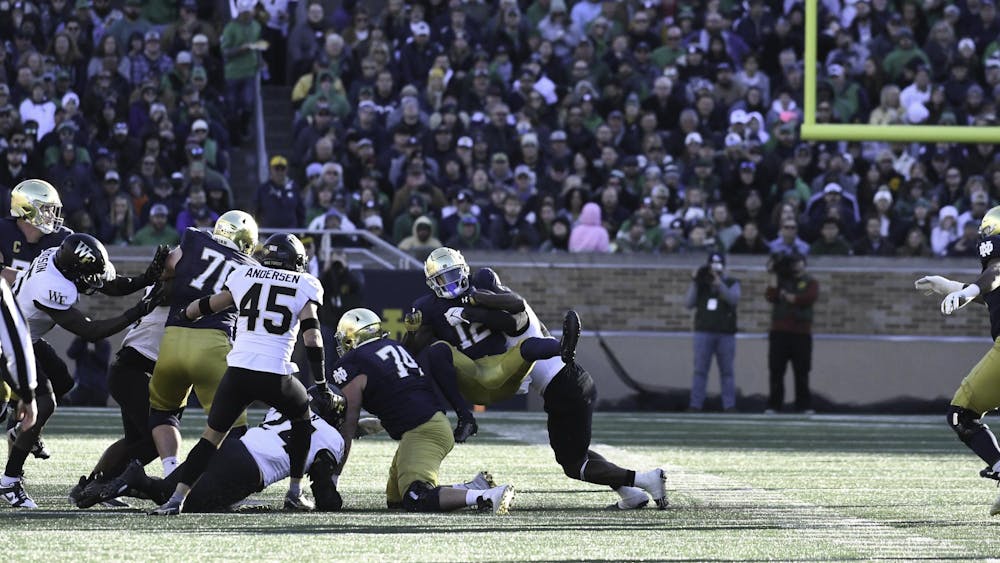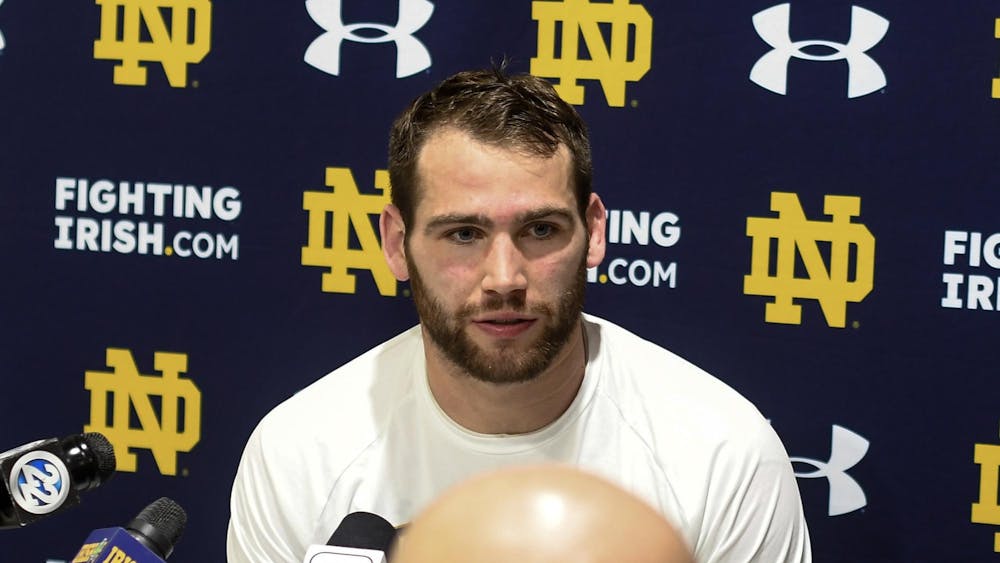James Madison and the FCS-FBS jump
Just over a month ago, James Madison had never played a game as an FBS program. They have now played five, won each of them, and were rewarded with the No. 25 spot in the AP Poll after a 42-20 victory over Arkansas State this weekend. While their rapid ascent into the Top 25 less than halfway through their inaugural FBS season is unprecedented, smooth and successful transitions from the FCS to the FBS are not.

Appalachian State, Liberty and UTSA — some of the strongest Group of Five programs in recent years — each moved to college football’s highest level after 2010 and quickly climbed the ranks of established FBS conferences. Surprisingly, these schools, among others, have been even more successful in the FBS than they were in their final years in the FCS. App State went 4-8 in 2013 before winning conference championships and posting 10-win seasons in four of its first six FBS seasons. Liberty finished with six wins in each of its last three FCS seasons before rolling to a 10-1 record in 2020 (that included a bowl win over previously undefeated Coastal Carolina, who joined the FBS in 2016). UTSA struggled to a 4-6 record in its lone season in the FCS following the establishment of its football program in 2011; last season, the Roadrunners went 12-2.
In recent years, none of the programs jumping to the FBS have been true FCS “powerhouses.” App State comes the closest to having earned this status, but at the time of their transition in 2014, they were several years removed from their FCS championship three-peat in 2005-2007 and had not won a playoff game in three years. Of the schools to appear in an FCS title game since 2008, James Madison is the first to move to the FBS. The Dukes made three of the last six FCS championship games, winning the title in 2016, and were the most consistent challenger to the North Dakota State dynasty. They provide the first data in at least two decades as to what dropping a dominant FCS program into the FBS would look like and are so far flourishing, having begun the year with four blowout victories and a tight road win against App State.
It remains to be seen whether James Madison’s torrid start will continue, and they have not faced a difficult schedule to date. Regardless, being ranked among the nation’s best teams just a year removed from playing FCS football is an impressive first step that highlights the underrated quality of play in the FCS. While you won’t find Alabama or Georgia in college football’s second tier, several good, but not great programs have won conference championships and bowls shortly after rising to the FBS level in the last decade alone. Now, a great FCS program has finally made the jump and is ranked ahead of the likes of Baylor, Notre Dame and Florida in its first season. James Madison is proving every week that the FCS should not be overlooked.
A Red River Blowout and college football’s biggest what-if
Sports are full of what-ifs, discussions of what would have happened if a single moment had played out differently. College football is no exception and is perhaps even more prone to these debates, given the power of each individual game to make or break a season. What if Joe Burrow never transferred to LSU, or Baker Mayfield didn’t walk on at Oklahoma? What if Alabama didn’t miss the field goal that led to Auburn’s “Kick Six” in 2013, or Michigan State didn’t return a mishandled punt for the game-winning touchdown in their 2015 matchup against Michigan? The most oft-discussed (and painful) what-ifs, though, stem from injuries, and the biggest one so far this season was caused by a sprained clavicle.
Quinn Ewers was the top-ranked recruit in the Class of 2022, and the dual-threat quarterback was viewed as a potential program-changing superstar when he committed to Texas. However, he later opted to decommit from the Longhorns in favor of Ohio State and reclassified to the 2021 recruiting class. After one year spent backing up Heisman finalist C.J. Stroud for the Buckeyes, Ewers reversed course again, transferring to Texas and immediately slotting in as their starting quarterback this season.

Having not played for an entire year, and with little time to adjust to a new program, expectations for Ewers’ debut were filled with uncertainty, but he wasted no time in living up to the hype. The Longhorn offense dominated in a season-opening 52-10 win over UL Monroe, but their first true test came the following week against No. 1 Alabama. Ewers shredded the Tide early on, completing 75% of his passes while throwing for 134 yards through less than a quarter of play. A big hit at the end of the first quarter knocked Ewers out of the game, though, and Texas’ passing attack fizzled out, allowing Alabama to escape with a 20-19 victory.
Over the next three weeks, Texas went 2-1 without Ewers, handling UTSA and West Virginia but falling to Texas Tech in overtime. Ewers finally returned to action in this weekend’s Red River Rivalry game against Oklahoma, and Texas obliterated the Sooners in a 49-0 victory. While the Longhorn defense stole the show by shutting out Oklahoma for the first time since 1965, the offense looked dynamic with Ewers, who compiled over 300 yards and threw four touchdown passes, at the helm.
With hopes of a Big 12 championship alive and well, Texas still has a lot to play for this season. However, the question of, “What if Ewers had never been injured?” will likely linger with Longhorn fans for a long time. It is not hard to imagine that Texas could have been a playoff contender, sitting at 6-0 with a win over Alabama under their belt instead of 4-2 with a pair of tight losses. It will only get easier if they continue to win games while Ewers plays like one of the nation’s best quarterbacks.
A Southern California resurgence
The 2021 NFL season concluded with the Los Angeles Rams winning the franchise’s second Super Bowl. The outlook for the city’s college programs was not as bright. USC finished the season with a 4-8 record, their worst since 1991, and fired embattled head coach Clay Helton. UCLA posted their first winning record since 2015 but provided little indication of being anything more than mediocre. This year, the Rams are a disappointing 2-3, but USC and UCLA have more than made up for it by posting a combined record of 12-0 (matching their combined wins from the entire 2021 season) and are currently ranked No. 7 and No. 11, respectively.
Improvement from USC was expected after the school landed former Oklahoma head coach Lincoln Riley during the offseason. Riley brought with him several of Oklahoma’s top players and recruits, including star quarterback Caleb Williams. The Trojans have struggled with slow starts this year, but a forgiving early-season group of opponents has been unable to make them pay. They will need to be sharper out of the gate as they move into the bulk of their Pac-12 slate. UCLA’s hot start comes as more of a surprise. The Bruins have featured one of the nation’s best offenses behind quarterback Dorian Thompson-Robinson, who has developed into a star in his fifth season as starter under head coach Chip Kelly. UCLA is battle-tested, having already secured key wins against Washington and Utah, but looked shaky while clawing out a one-point victory against South Alabama earlier in the season.
USC and UCLA will face off in November, and the biggest obstacle standing in the way of a matchup between unbeatens comes from each team’s next game. USC is on the road against No. 20 Utah on Saturday and UCLA will travel to Eugene to face No. 12 Oregon next week after a bye. If they both emerge victorious, the battle for Los Angeles will have crucial implications on not only the Pac-12 title race, but the playoff landscape as well. College football is back in the City of Angels.
Contact Matthew Crow at mcrow@nd.edu.
The views expressed in this Sports Authority are those of the author and not necessarily those of The Observer.












